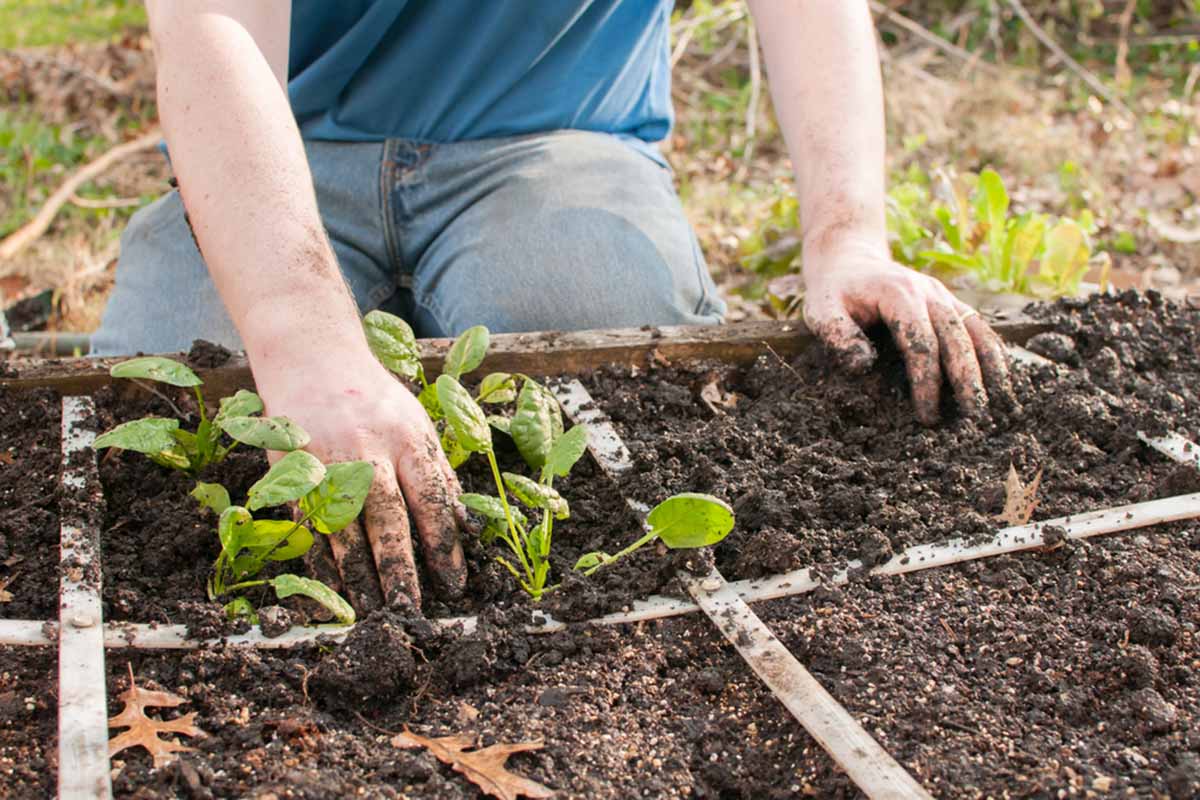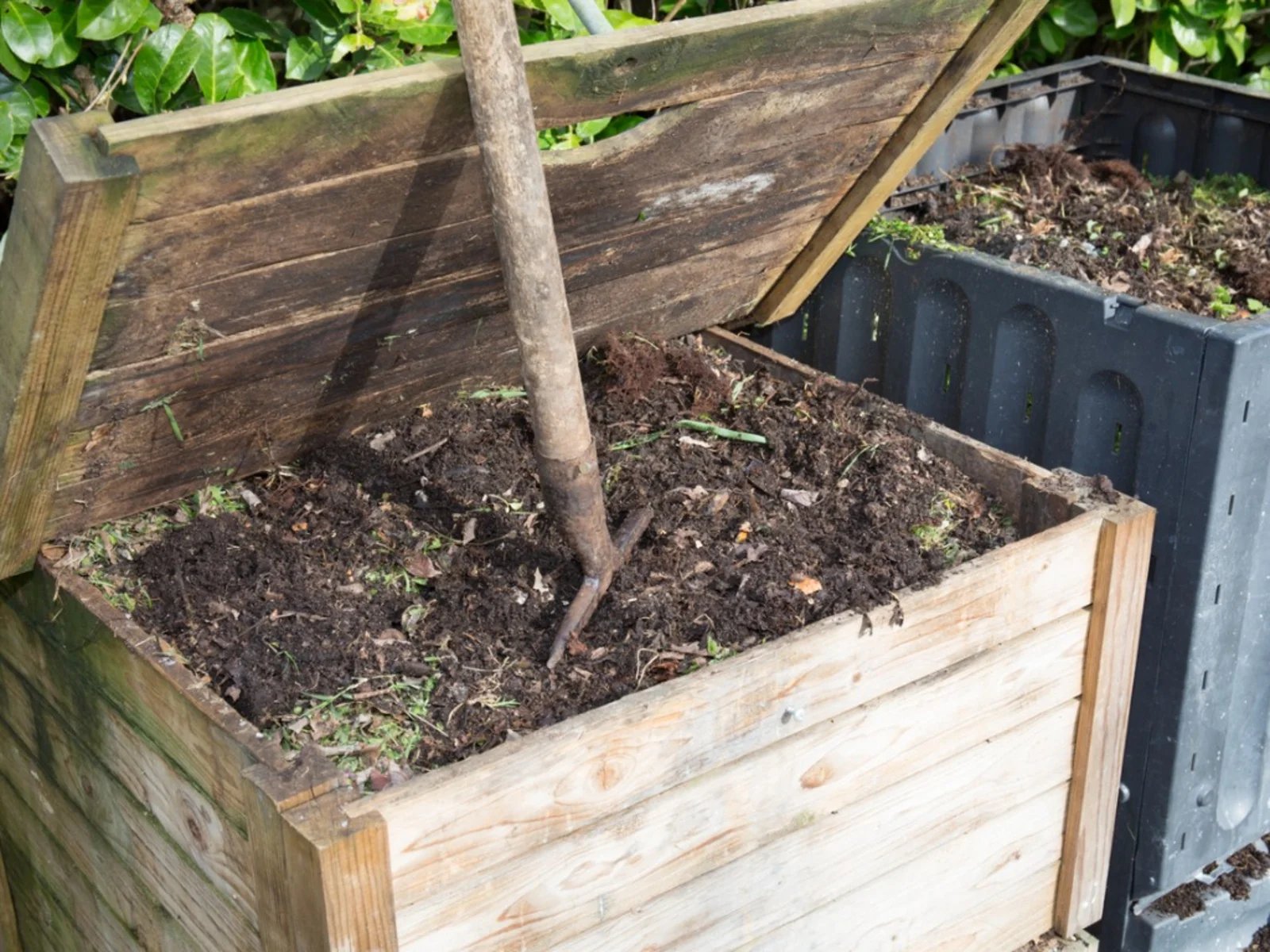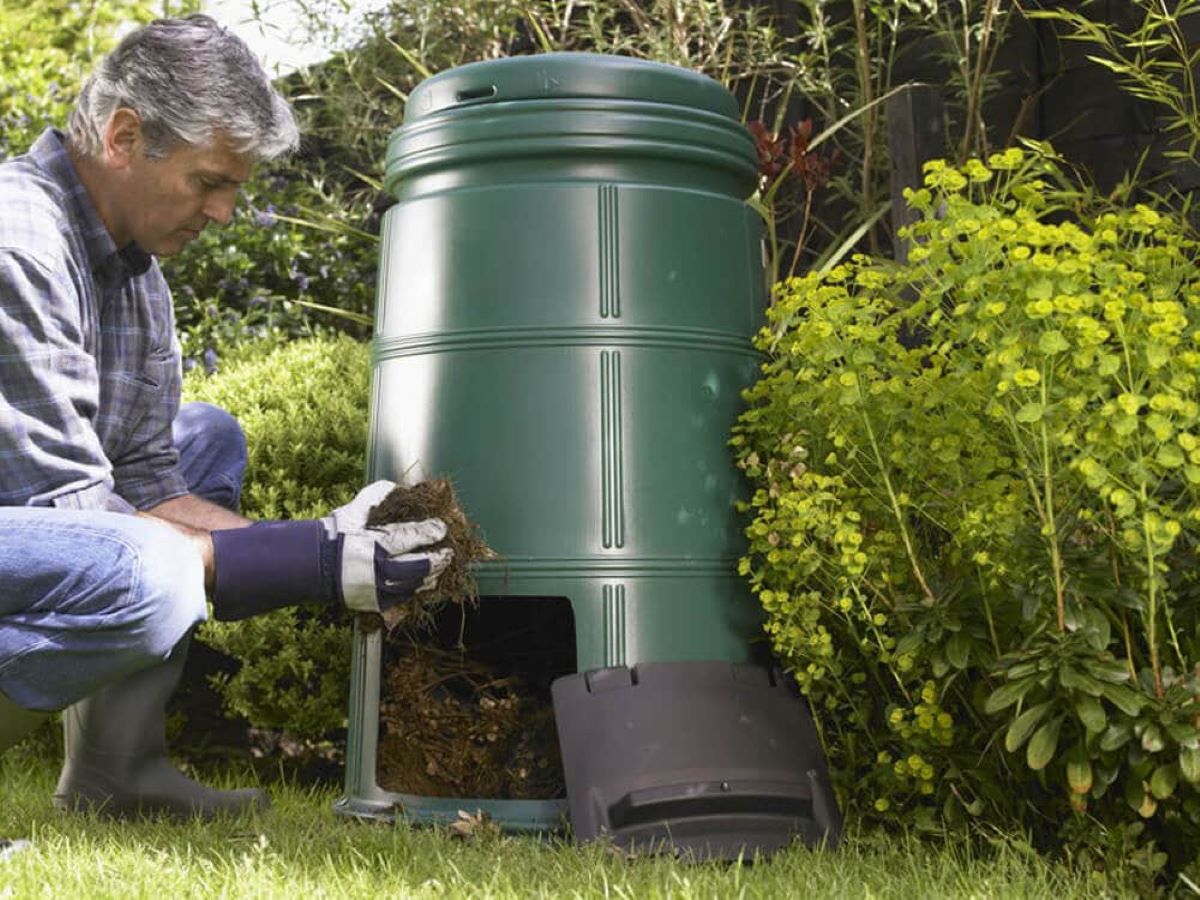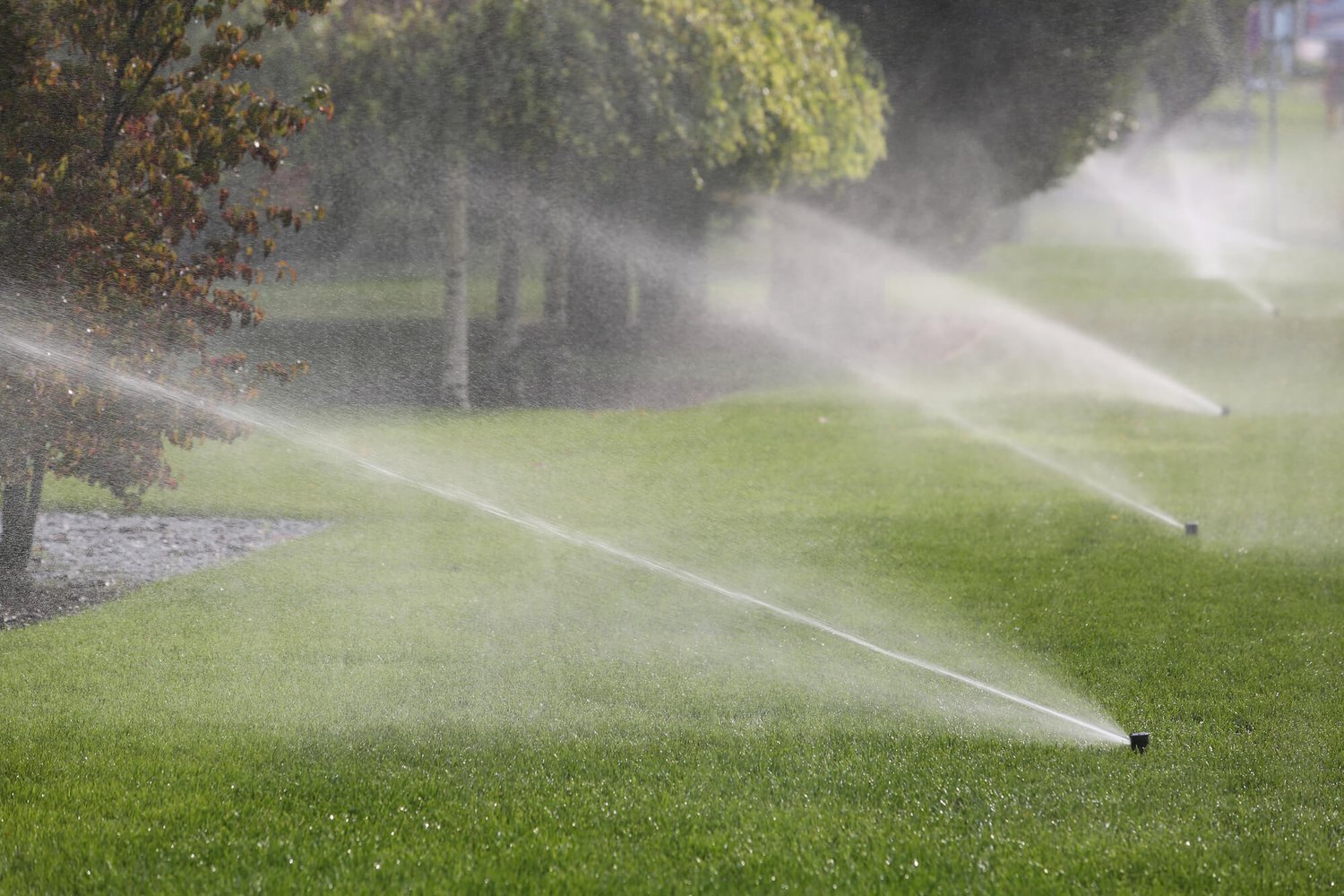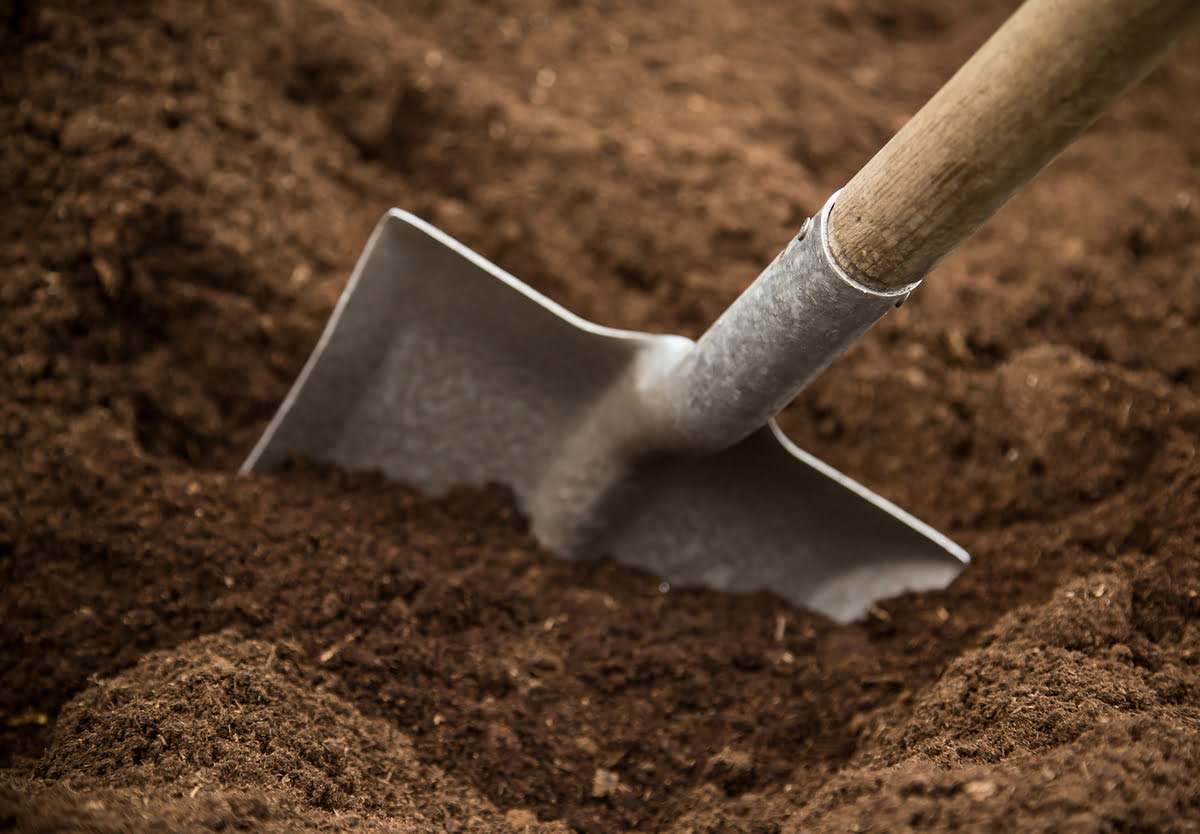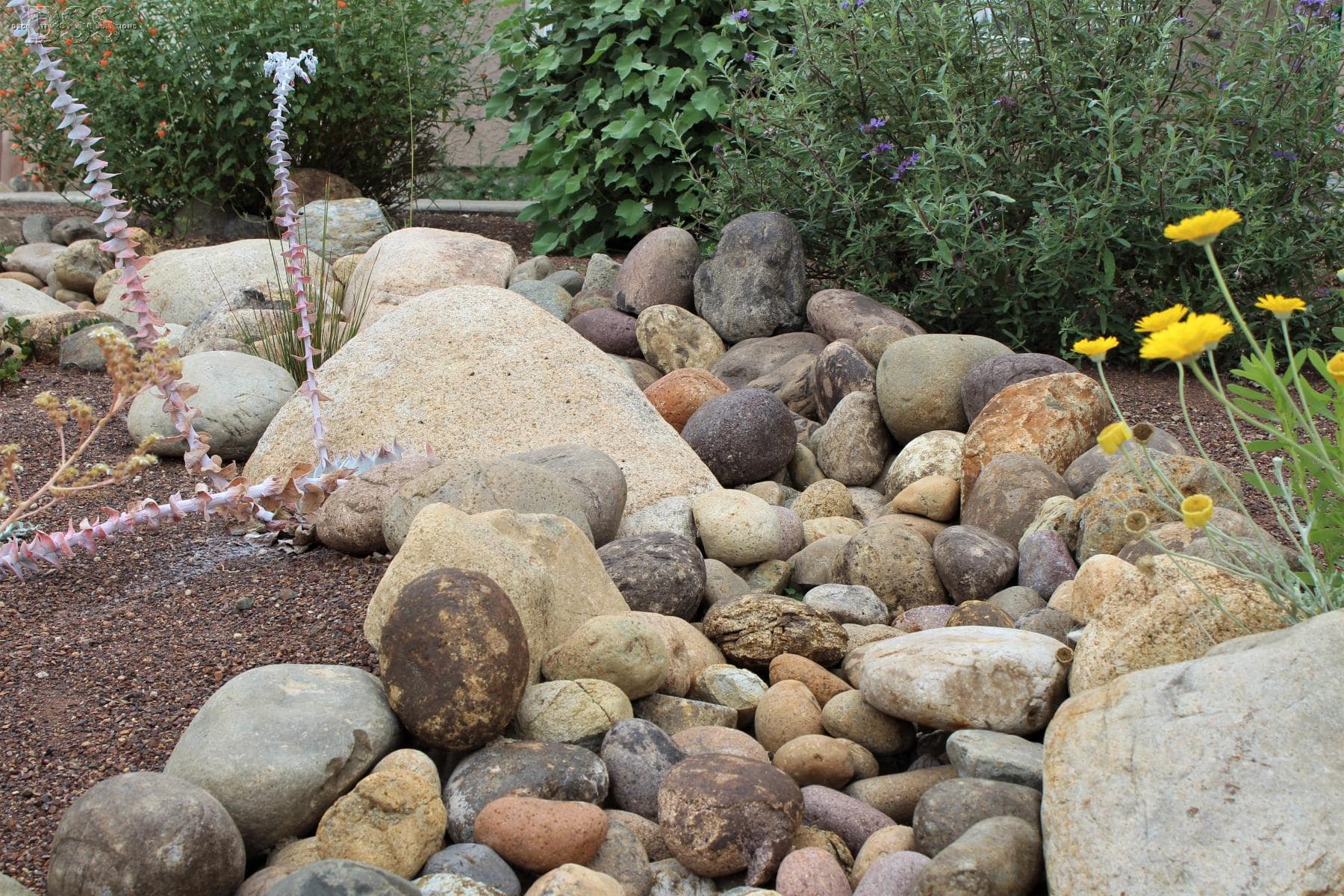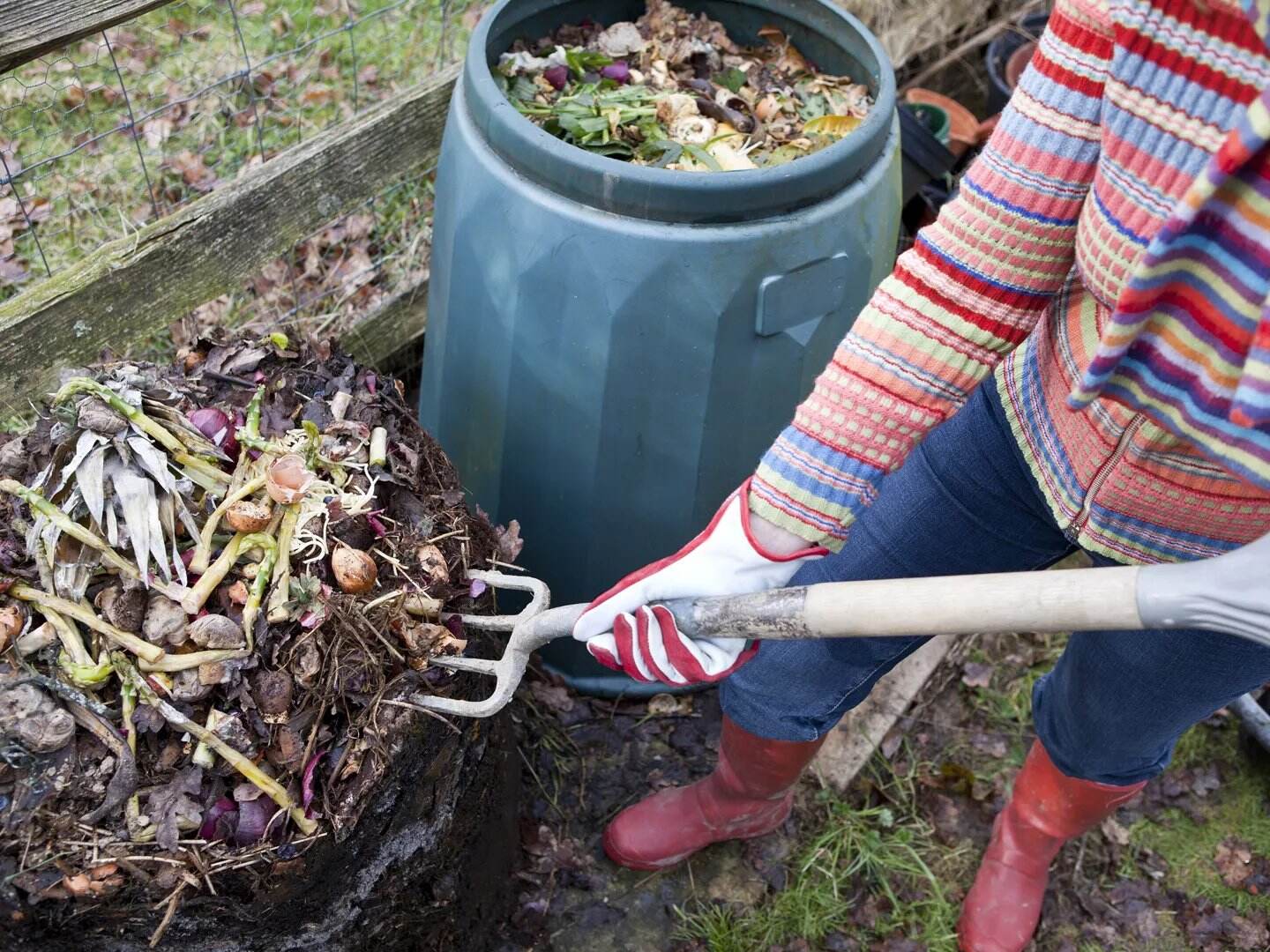Home>Gardening Techniques>DIY Projects>What Size Compost Bin Do I Need
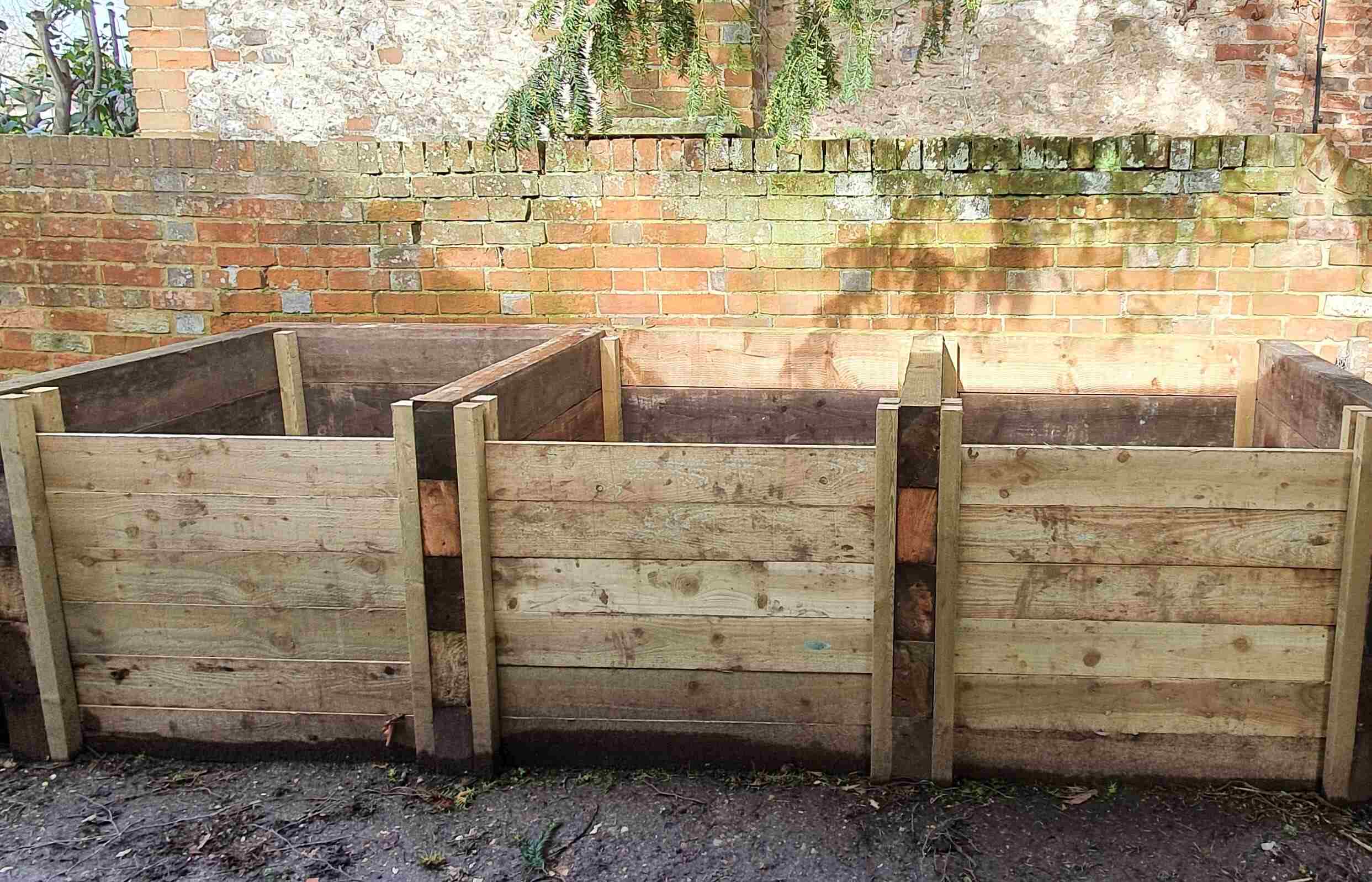

DIY Projects
What Size Compost Bin Do I Need
Modified: January 22, 2024
Learn how to determine the perfect size for your DIY compost bin with our helpful guide. Start your eco-friendly journey today!
(Many of the links in this article redirect to a specific reviewed product. Your purchase of these products through affiliate links helps to generate commission for Chicagolandgardening.com, at no extra cost. Learn more)
Table of Contents
Introduction
Welcome to the fascinating world of composting, where kitchen scraps and yard waste transform into nutrient-rich organic matter for your garden. Composting is not only an environmentally friendly practice but also a rewarding and cost-effective way to improve soil fertility and reduce waste. When diving into the world of composting, one important question arises: how big of a compost bin do I need?
Choosing the right compost bin size is crucial for effectively managing your composting operation. A poorly sized bin can lead to issues such as insufficient airflow, slow decomposition, or an overwhelming amount of compost that exceeds your gardening needs. In this article, we will explore the factors you need to consider when determining the ideal compost bin size for your needs.
Compost bin sizes can range from small containers for apartment dwellers to large, multi-section units for avid gardeners. The size you choose will depend on various factors, including your available space, composting goals, and the amount of waste you generate.
Join us on this journey as we delve into the world of compost bin sizes and help you find the right fit for your composting needs. Whether you are a novice or an experienced composter, the knowledge gained from this article will set you on the path to successful composting.
Factors to Consider When Choosing a Compost Bin Size
Before selecting the size of your compost bin, there are several factors you should take into consideration. These factors will help ensure that your composting operation is efficient, effective, and tailored to your specific needs.
1. Available Space: The first factor to consider is the amount of space you have for your compost bin. If you have a small balcony or limited backyard, a compact compost bin or even a worm composting system may be more suitable. However, if you have ample space, you can opt for larger bins or multiple compartments to handle a higher volume of compostable materials.
2. Composting Goals: Determine your composting goals. Are you composting primarily for a small garden or flower beds, or do you have larger farming or landscaping projects in mind? Understanding your goals will help you prioritize the quantity of compost you need to produce.
3. Waste Generation: Assess the amount of organic waste you generate on a regular basis. Consider both kitchen scraps (fruit and vegetable peels, coffee grounds, etc.) and yard waste (grass clippings, leaves, and prunings). If you produce a significant amount of waste, you will need a larger compost bin to accommodate it.
4. Decomposition Speed: Different compost bins have varying rates of decomposition. Some bins facilitate faster decomposition, while others may take longer. If you want quick results, you may opt for a compost tumbler or a hot composting bin. If you are more patient, a traditional open bin or a vermicomposting system might be suitable.
5. Maintenance Effort: Consider the effort you are willing to put into managing your compost bin. Larger bins generally require more maintenance, such as regular turning or monitoring of temperature and moisture levels. If you have limited time or prefer a low-maintenance approach, a smaller bin may be more practical.
6. Future Expansion: Anticipate your future composting needs. If you foresee an increase in waste generation or plan to expand your gardening efforts, it might be wise to choose a compost bin size that allows for future expansion. This will save you the hassle of upgrading or purchasing additional bins later on.
By considering these factors, you can make an informed decision about the size of your compost bin. Remember, composting is a flexible and customizable process, so don’t hesitate to adjust and experiment along the way. With the right bin size, you’ll be on track to creating nutrient-rich compost for your plants and contributing to a greener planet.
Evaluating Your Composting Needs
Understanding your composting needs is essential in determining the appropriate size for your compost bin. By evaluating the amount of organic waste you produce and your gardening aspirations, you can align your composting efforts accordingly. Here are some steps to help you evaluate your composting needs:
1. Waste Assessment: Start by assessing the volume of organic waste you generate on a regular basis. This includes kitchen scraps, yard trimmings, and other compostable materials. Keep track of the amount of waste produced in a week or a month. Understanding your waste output will give you an idea of how much compost you need to produce.
2. Garden Size: Consider the size of your garden or the area where you will be applying the compost. If you have a small backyard, a few flower beds, or potted plants, a smaller compost bin may be sufficient. However, for larger gardens or extensive landscaping projects, you may need a larger bin to generate an ample supply of compost.
3. Soil Quality: Evaluate the current state of your soil. If it lacks nutrients or organic matter, you may need to produce a larger quantity of compost to improve its quality. Conduct a soil test to determine the specific nutrient deficiencies and adjust your composting goals accordingly.
4. Planting Season: Consider the planting season and the frequency of your gardening activities. If you have a short growing season or engage in year-round gardening, you may need a larger bin to consistently produce compost for your planting needs.
5. Composting Timeframe: Determine how quickly you need the compost. If you have time constraints and need compost within a few months, you may choose a bin that facilitates faster decomposition, such as a compost tumbler. However, if time is not a critical factor, a traditional open bin or a vermicomposting system can be viable options.
6. Future Expansion: Consider your future composting aspirations. If you plan to expand your gardening or landscaping projects, it’s wise to choose a compost bin size that allows for future growth. This way, you won’t outgrow your bin and can continue to meet your composting needs as they evolve.
By thoroughly evaluating your composting needs, you can establish the appropriate size of your compost bin. This will ensure that you generate enough compost to enrich your soil and support your gardening endeavors. Remember, composting is a dynamic process, and you can always adjust your bin size as your needs change over time.
Understanding Compost Bin Sizes
Compost bins come in various sizes, each suited to different composting needs and available space. Understanding the different bin sizes available can help you make an informed decision when selecting the right one for your composting project. Here are the three main categories of compost bin sizes:
1. Small Compost Bins: Small compost bins are ideal for individuals or households with limited space. These bins are compact, making them suitable for balconies, small patios, or even indoor use. They can accommodate smaller volumes of organic waste, making them perfect for smaller gardens or potted plants. Small compost bins often utilize a closed container or a worm composting system, allowing for efficient decomposition in a confined space. Despite their size, they can still provide sufficient compost for small-scale gardening needs.
2. Medium Compost Bins: Medium-sized compost bins are a popular option for average-sized households and small gardens. These bins offer a slightly larger capacity, allowing for the composting of a more significant amount of organic waste. They can accommodate materials such as kitchen scraps, grass clippings, and small branches. Medium compost bins often come in the form of open-sided enclosures or compost tumblers, providing adequate airflow for decomposition. These bins strike a balance between space efficiency and composting capabilities, making them widely used by home gardeners.
3. Large Compost Bins: Large compost bins are designed for ambitious gardeners, farming projects, or communities with substantial composting needs. These bins often consist of multiple compartments or larger enclosures that can accommodate a significant volume of compostable materials. Large compost bins are suitable for handling a variety of organic waste, including garden waste, food scraps, and larger branches. They are typically open bins or larger-scale compost tumblers, providing ample space for efficient decomposition. These bins are capable of producing a considerable amount of compost, making them suitable for larger gardens or farming operations.
When selecting a compost bin, it’s essential to consider the size that best aligns with your composting goals, available space, and waste generation. Remember that the size of your bin will determine the amount of compost you can produce and the space it will occupy in your garden or outdoor area.
Whether you choose a small, medium, or large compost bin, each size offers unique benefits and can contribute to the success of your composting endeavors. Understanding the different sizes available allows you to select the one that suits your specific composting needs, ensuring a productive and efficient composting experience.
Small Compost Bins
Small compost bins are a perfect choice for those with limited space or individuals looking to compost on a smaller scale. These compact bins are designed to fit in tight spaces such as balconies, small patios, or even inside the kitchen. Despite their size, they offer significant benefits and can be an effective solution for recycling organic waste into nutrient-rich compost.
1. Closed Container Bins: One common type of small compost bin is a closed container. These bins are typically made of durable plastic or metal and have a tightly sealed lid. The closed design helps retain heat and moisture, allowing for faster decomposition. Closed container bins are ideal for composting kitchen scraps, including fruit and vegetable peelings, coffee grounds, and eggshells. They are also suitable for small amounts of yard waste such as leaves or trimmings. These bins are relatively low-maintenance and odor-free when properly managed.
2. Worm Composters: Worm composters, also known as vermicomposting systems, are another option for small-scale composting. These bins use worms, typically red wigglers, to break down organic waste into nutrient-rich worm castings. Worm composters are ideal for apartment dwellers or those without outdoor space. They can be kept indoors, often under a kitchen sink or in a utility room. The worms efficiently process kitchen scraps, including fruits, vegetables, and coffee grounds. Worm castings, also known as vermicompost, are exceptionally nutrient-rich and can be used directly in garden soil or as a potent fertilizer for houseplants.
3. DIY Solutions: For those with a creative side, DIY solutions are a great way to create small compost bins using everyday materials. You can repurpose plastic containers, wooden crates, or even build a small wooden enclosure with breathable sides. DIY compost bins allow you to customize the size and design to fit your available space and composting needs. With some basic knowledge and a little creativity, you can create an affordable and effective small compost bin that blends seamlessly with your surroundings.
Small compost bins may have limited capacity, but they offer convenience and ease of use. They are ideal for individuals or households that produce a relatively small amount of organic waste. These bins can still provide a steady supply of nutrient-rich compost for potted plants, small gardens, or container gardening. With proper maintenance and regular turning, small compost bins can efficiently break down organic materials and yield high-quality compost.
Whether you opt for a closed container bin, a worm composter, or a DIY solution, small compost bins offer a practical and sustainable way to reduce waste and enrich your gardening endeavors. Embrace the possibilities of small-scale composting and discover how even the tiniest bin can have a big impact on your sustainable lifestyle.
Medium Compost Bins
Medium compost bins are an excellent choice for individuals and households looking to compost on a slightly larger scale. These bins offer a balance between space efficiency and composting capabilities, making them suitable for average-sized gardens and landscaping projects. With their increased capacity, medium compost bins can handle a more significant volume of organic waste and produce a generous supply of nutrient-rich compost.
1. Open-sided Enclosures: One popular type of medium compost bin is an open-sided enclosure. These bins are typically constructed using wooden pallets, wire mesh, or other materials that allow for proper airflow. With their open design, they facilitate natural ventilation, making it easier for microorganisms to break down the organic materials. Open-sided enclosures can accommodate a variety of compostable materials, including kitchen scraps, leaves, grass clippings, and small branches. They are relatively easy to build or purchase and provide ample space for efficient decomposition.
2. Compost Tumblers: Compost tumblers are another type of medium compost bin that offers the advantage of convenience and faster decomposition. These bins have a cylindrical design and can be rotated to mix and aerate the materials inside. Compost tumblers are ideal for individuals with limited physical mobility or those who prefer a low-maintenance composting method. They can handle a mix of kitchen scraps, yard waste, and other compostable materials. The tumbling action promotes faster decomposition by providing frequent aeration and agitation to the composting materials.
3. Dual or Triple Chamber Bins: For those seeking a more organized approach to composting, dual or triple chamber bins are the perfect solution. These bins consist of separate compartments that allow for different stages of decomposition. The first chamber is used for active composting, where fresh materials are added and undergo initial decomposition. The second chamber is for maturing compost, where partially decomposed materials are left to further break down and mature. Additional chambers can be added for different stages of composting. This system allows for a continuous composting process, with finished compost readily available while new materials are added to the active chamber.
Medium compost bins offer a significant increase in capacity compared to small bins while still maintaining space efficiency. They can generate a sufficient amount of compost to support the needs of average-sized gardens, flower beds, or even small-scale vegetable cultivation. With proper management, medium compost bins can convert a wide range of organic waste into nutrient-rich compost that improves soil fertility and enhances plant growth.
Whether you choose an open-sided enclosure, a compost tumbler, or a dual/triple chamber bin, medium compost bins strike a balance between convenience and effectiveness. They are versatile and adaptable to various composting methods and can help you achieve your composting goals more efficiently.
Embrace the possibilities of medium-scale composting and unlock the potential of turning your organic waste into a valuable resource for your garden and the environment.
Large Compost Bins
Large compost bins are designed for individuals, communities, or organizations with substantial composting needs. These bins offer a higher capacity and are suitable for ambitious gardeners, large-scale farming projects, or composting initiatives involving a significant volume of organic waste. With their ability to handle large quantities of materials, large compost bins can produce a substantial amount of nutrient-rich compost.
1. Multiple Compartment Bins: One common type of large compost bin is a multiple compartment system. These bins consist of two or more compartments that allow for sequential composting. The organic waste is added to the first compartment, where it undergoes the initial stages of decomposition. As the compost matures, it is then transferred to the subsequent compartments for further breakdown. This system enables continuous composting with a steady supply of finished compost available for use while new materials are added to the active compartment.
2. Wooden-Bin Enclosures: Large compost bins can also be constructed using wooden bin enclosures. These bins offer ample space and durability, allowing for the composting of a significant volume of materials. The wooden enclosure provides a sturdy structure and helps retain heat, promoting faster decomposition. These bins are typically built with removable slats or hinged doors, making it easier to access and turn the compost when necessary. Wooden-bin enclosures are ideal for large-scale gardening projects, community composting initiatives, or farms.
3. Large-Scale Compost Tumblers: Large-scale compost tumblers are another option for individuals or organizations with substantial composting needs. These tumblers are built on a larger scale to accommodate a higher volume of materials. They utilize the same tumbling action as smaller models, but with a greater capacity. The tumbling action provides regular aeration and mixing, accelerating the decomposition process. Large-scale compost tumblers are particularly suitable for commercial farms, educational institutions, or composting operations that require a continuous supply of compost for extensive gardening projects.
Large compost bins offer significant advantages for those involved in intensive gardening or farming activities. They can efficiently process a large variety of organic waste, including garden trimmings, yard waste, crop residue, and livestock bedding. With their higher capacity, large compost bins can supply a substantial amount of nutrient-rich compost, promoting soil health and enhancing plant growth.
When considering a large compost bin, it’s important to evaluate the available space and the specific composting needs. These bins may require more maintenance and physical effort due to their size, but their ability to handle larger quantities of waste makes them invaluable for those seeking to compost on a larger scale.
Embrace the potential of large-scale composting and harness the benefits of converting organic waste into valuable compost for your large gardens, agricultural operations, or community initiatives.
Determining the Right Size for Your Compost Bin
Choosing the right size for your compost bin is crucial for successful and efficient composting. To determine the appropriate size, consider the following factors:
1. Waste Generation: Evaluate the amount of organic waste you produce on a regular basis. This includes kitchen scraps, yard trimmings, and other compostable materials. If you generate a significant amount of waste, you will need a larger bin to accommodate it. On the other hand, if your waste output is minimal, a smaller bin may suffice.
2. Available Space: Assess the amount of space you have for your compost bin. Measure your backyard or outdoor area to determine the maximum dimensions that can be accommodated. If space is limited, opt for a smaller or more space-efficient design such as a compact closed container, a worm composter, or a compost tumbler. If you have ample space, a larger bin or multiple compartments may be suitable.
3. Composting Goals: Consider your composting goals and the intended use of the compost. Are you composting mainly for a small garden or flower beds, or do you have larger-scale farming or landscaping projects in mind? Determining your composting goals will help you estimate the quantity of compost you need to produce and guide you in selecting the appropriate bin size.
4. Time and Effort: Evaluate the time and effort you are willing to dedicate to composting. Larger bins may require more maintenance, such as regular turning or monitoring of temperature and moisture levels. If you have limited time or prefer a low-maintenance approach, a smaller bin or a compost tumbler that requires less maintenance may be more practical for you.
5. Future Expansion: Anticipate your future composting needs. If you foresee an increase in waste generation or plan to expand your gardening efforts, choose a compost bin size that allows for future expansion. This will save you the hassle of upgrading or purchasing additional bins later on.
By considering these factors, you can determine the right size for your compost bin. Remember that composting is a flexible and adaptable process, and you can always adjust and modify your bin size as your needs change over time. It’s better to start with a bin that meets your current requirements and then scale up if needed rather than investing in a larger bin right away.
Keep in mind that the size of your compost bin will directly impact the amount of compost you can produce. It’s important to find the right balance between waste generation, available space, composting goals, and maintenance needs to ensure a successful composting experience.
Take the time to assess your specific circumstances and choose a compost bin size that suits your unique needs. With the right bin size, you’ll be on your way to producing nutrient-rich compost while contributing to a greener and more sustainable environment.
Tips for Successful Composting at Any Bin Size
Regardless of the size of your compost bin, there are several tips and best practices that can help you achieve successful composting. These tips will ensure that your composting process is efficient, odor-free, and yields high-quality compost for your garden. Here are some guidelines to follow:
1. Balance Greens and Browns: Maintain a good balance between “greens” (nitrogen-rich materials like vegetable scraps and grass clippings) and “browns” (carbon-rich materials like dry leaves and small twigs). This balance provides the necessary carbon-to-nitrogen ratio for effective decomposition. Aim for a 3:1 or 4:1 ratio of browns to greens in your compost bin.
2. Chop or Shred Materials: Cut or shred larger organic materials into smaller pieces. This increases the surface area, allowing for quicker decomposition. Smaller pieces also provide better airflow and help prevent the formation of compacted layers within the compost pile.
3. Keep Moisture Levels Balanced: Maintain the right level of moisture in your compost bin. The composting materials should feel like a damp sponge; not too wet or too dry. Water the bin if it becomes too dry, and add more browns if it becomes too wet. A moisture level of around 50-60% is optimal for efficient decomposition.
4. Turn the Compost Regularly: Mix or turn the compost pile regularly to promote airflow and avoid the development of anaerobic conditions. Turning the pile every few weeks helps distribute moisture, heat, and microorganisms throughout the bin, resulting in faster decomposition and preventing foul odors.
5. Add Compost Activators: Speed up the decomposition process by adding compost activators such as finished compost, garden soil, or commercial compost starters. These activators introduce beneficial microorganisms that aid in breaking down the organic matter more efficiently.
6. Monitor Temperature: Regularly monitor the temperature of your compost pile. Proper decomposition occurs within the range of 90-140°F (32-60°C). If the pile is not reaching these temperatures, consider adjusting the carbon-to-nitrogen ratio or adding more nitrogen-rich materials to heat up the composting process.
7. Avoid Adding Diseased or Pest-infested Materials: Refrain from adding materials that are diseased, pest-infested, or contain invasive plant species. These materials can survive the composting process and spread diseases or pests in your garden when the compost is applied.
8. Be Patient: Composting takes time, and the length of the process will depend on factors such as bin size, composting method, and environmental conditions. Be patient and allow the microorganisms and decomposition process to work naturally. Over time, you will be rewarded with rich, dark, and crumbly compost.
9. Use the Finished Compost Wisely: Apply the finished compost to your garden, flower beds, or potted plants. It improves soil structure, retains moisture, and provides essential nutrients. Remember to use the compost in accordance with the specific needs of your plants and crops.
Following these tips will help you achieve successful composting, regardless of the size of your compost bin. Embrace the process, experiment with different materials and techniques, and enjoy the rewards of creating nutrient-rich compost for a healthier and more vibrant garden.
Conclusion
Choosing the right size for your compost bin is essential for successful composting and maximizing the benefits of your organic waste. Whether you opt for a small, medium, or large compost bin, each size has its advantages and considerations. Understanding your composting needs, evaluating waste generation, available space, and future expansion plans will guide you in selecting the appropriate bin size.
Small compost bins are ideal for those with limited space or individuals composting on a smaller scale. Closed container bins and worm composters offer convenient options that can fit into tight spaces while still producing valuable compost.
Medium compost bins strike a balance between space efficiency and composting capabilities. Open-sided enclosures and compost tumblers are popular choices for average-sized households and small gardens, providing sufficient capacity to handle a moderate volume of organic waste.
Large compost bins are designed for ambitious gardeners, farming projects, or composting initiatives with substantial needs. Multiple compartment bins, wooden-bin enclosures, and large-scale compost tumblers offer increased capacity to handle larger volumes of organic waste.
Regardless of the size of your compost bin, there are universal tips for successful composting. Balancing greens and browns, chopping or shredding materials, maintaining moisture levels, regular turning, adding compost activators, monitoring temperature, and patience are key factors that contribute to efficient composting at any bin size.
By following these tips and taking into account the specific needs of your composting project, you can create nutrient-rich compost to enrich your soil, reduce waste, and support a more sustainable lifestyle.
Remember, composting is a dynamic and adaptable process. As your composting needs evolve, you can adjust your bin size, experiment with different methods, and continue to learn and refine your composting techniques. Embrace the journey of composting and enjoy the rewards of producing your own natural fertilizer for healthy plants and a greener environment.
